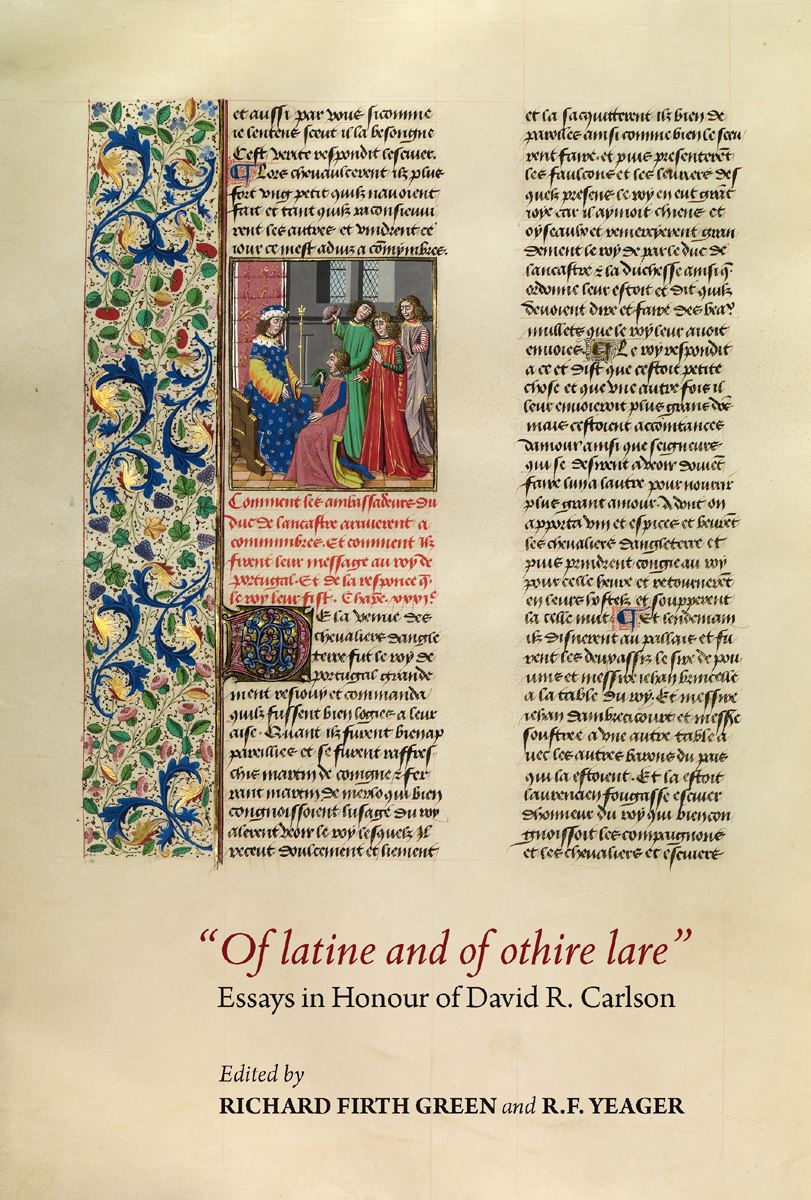
"Unsurprisingly, in view of the remarkable diversity of David R. Carlson’s own scholarship, the eighteen essays gathered here in his honour represent a corresponding variety of subjects across a broad range of countries and periods, but all drawing inspiration from his deep learning.
Many are linked by their interest in Rome’s intellectual legacy to the Middle Ages, the way, for instance, medieval readers understood Ovid (Frank Coulson and David Gura), or the use to which vernacular writers like Chaucer and Gower might put both Ovid (Richard Firth Green) and Statius (James Simpson). Some illuminate various aspects of Anglo-Latin works by authors like Walter of Peterborough (Stephanie Batkie), John Gower (Bob Yeager and Matthew Irvin), and Thomas Gascoigne (Michael Van Dussen), while others investigate the Latin discourse of fifteenth-century London (Rita Copeland) and of the great abbeys of St Albans, Glastonbury, and Canterbury (Andrew Galloway and James Carley). Further, several authors reflect Carlson’s own interest in the social contexts of vernacular literary discourse, both English and French: Geoff Rector on Hue of Roteland, Andrew Taylor on Jean Froissart, Michael Bennett on John Gower, and John Scattergood on Charles d’Orléans. The collection concludes with two bibliographic studies (Julia Boffey on late fifteenth-century bills of fare and Ana Sáez-Hidalgo on Katherine of Aragon’s books), and with A.S.G. Edwards’ brief life of the American editor of John Lydgate, Henry Bergen, a scholar who may have shared Carlson’s left-leaning convictions but whose work was far less wide-ranging than his.
'This tribute volume for David Carlson fills an impressive role in celebrating his wide and varied interests. The contributors, all distinguished in their own fields, supplement his work with articles on subjects from Ovidian commentary to the management of feasts, from the improprieties of the Hereford market-place to the movements of manuscripts and books. There will be few medievalists who will not both enjoy it and learn from it.' — Helen Cooper, University of Cambridge"
-Pims.ca (https://pims.ca/publication/isbn-978-0-88844-835-4/)
